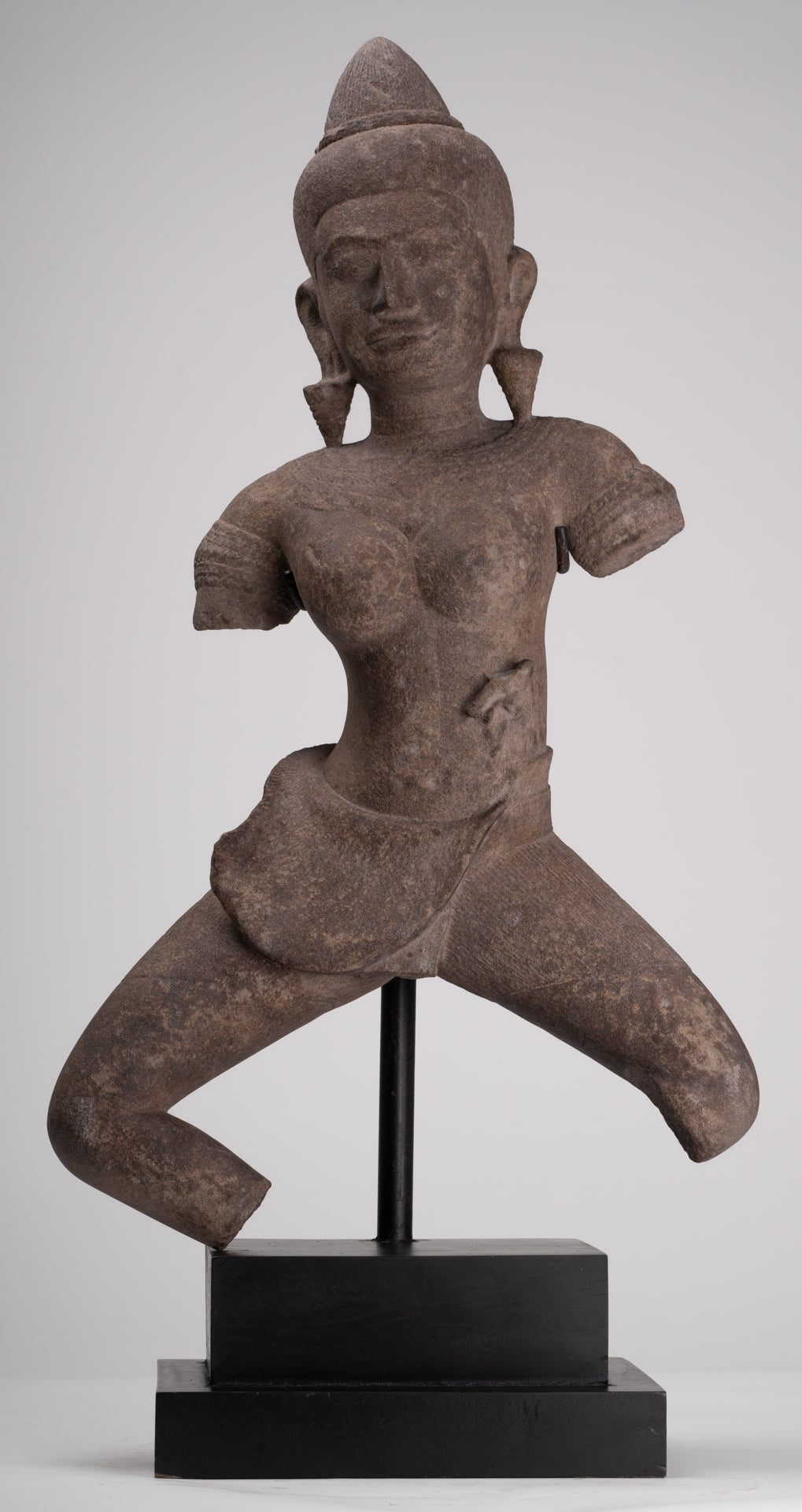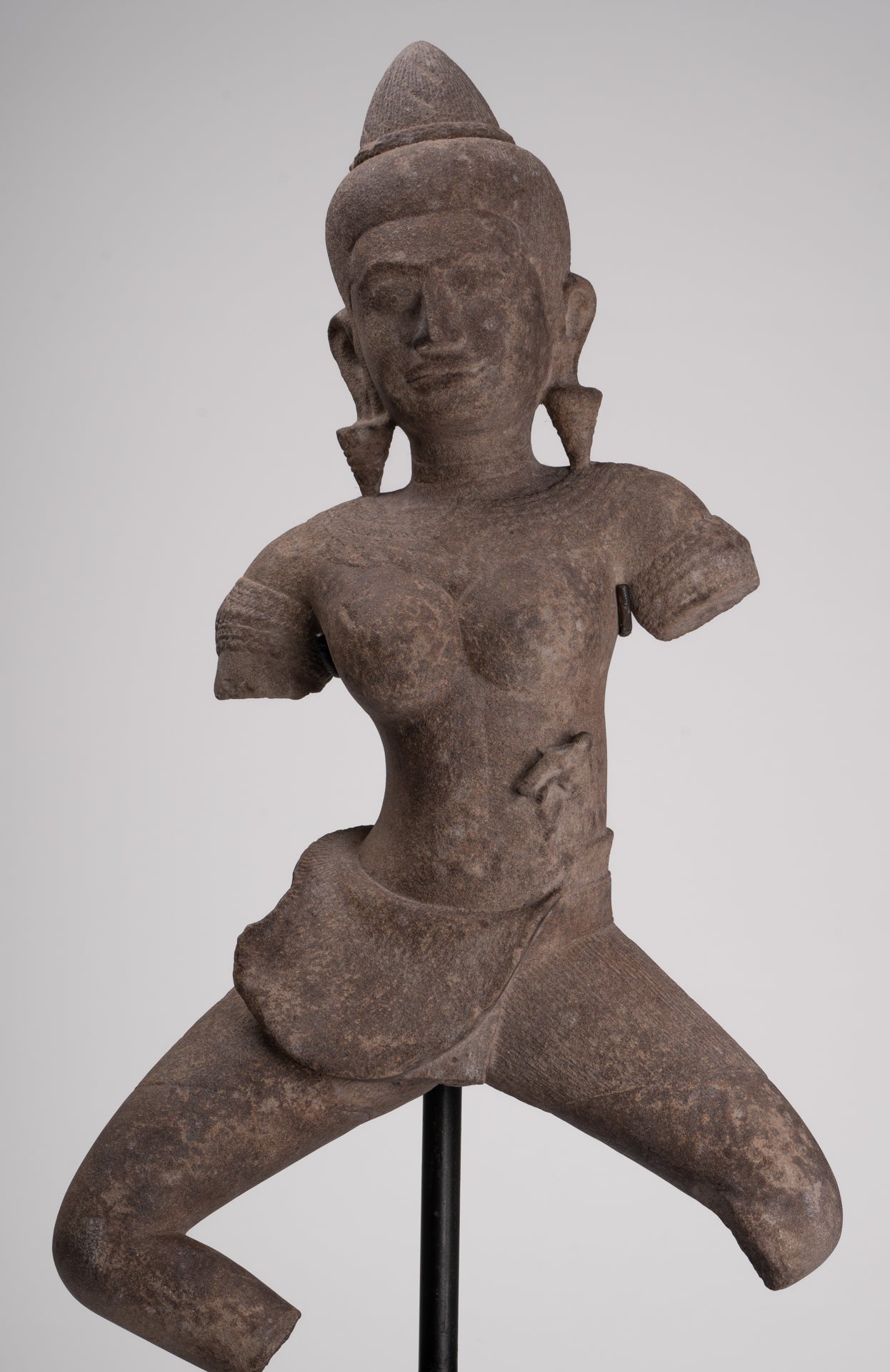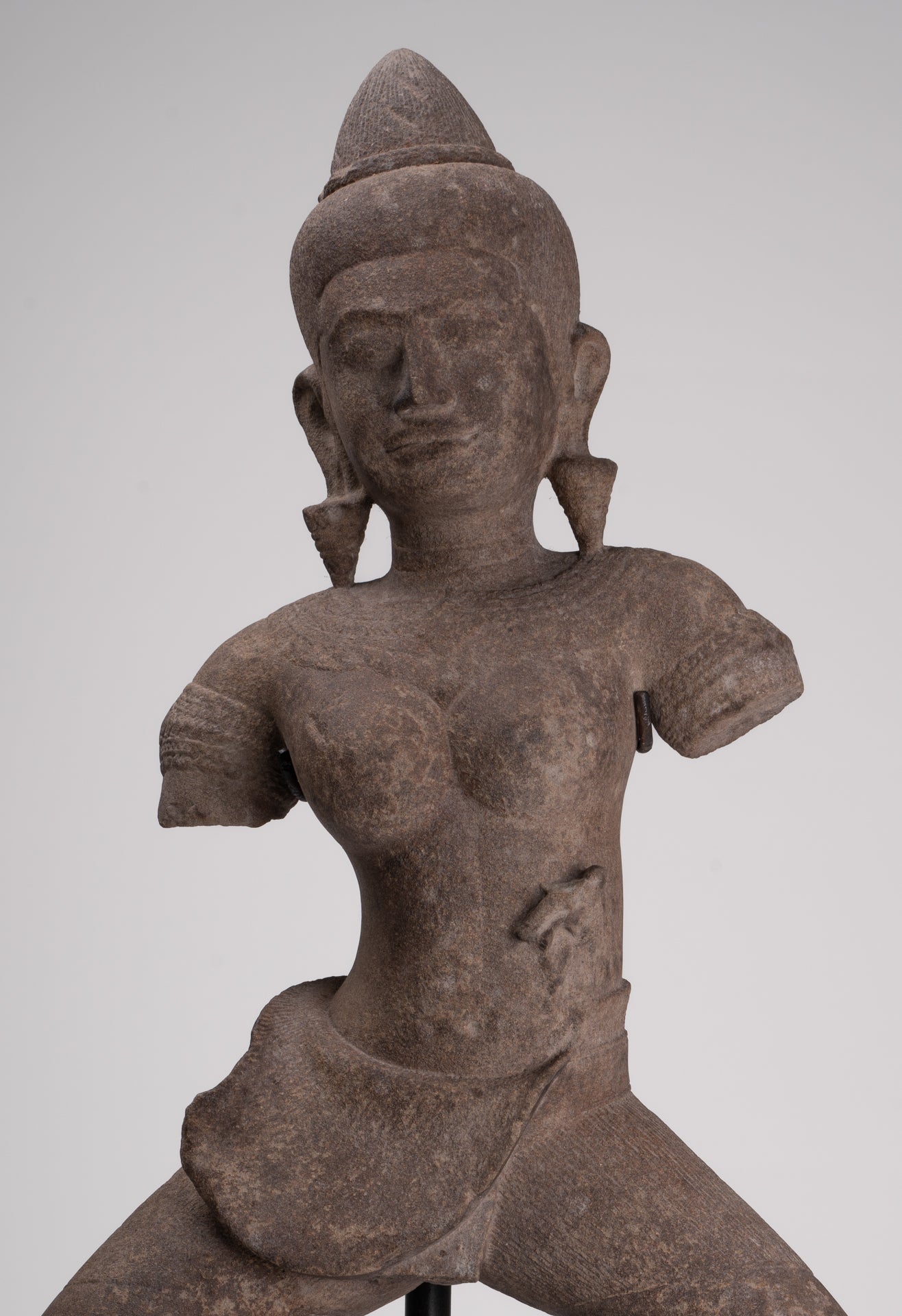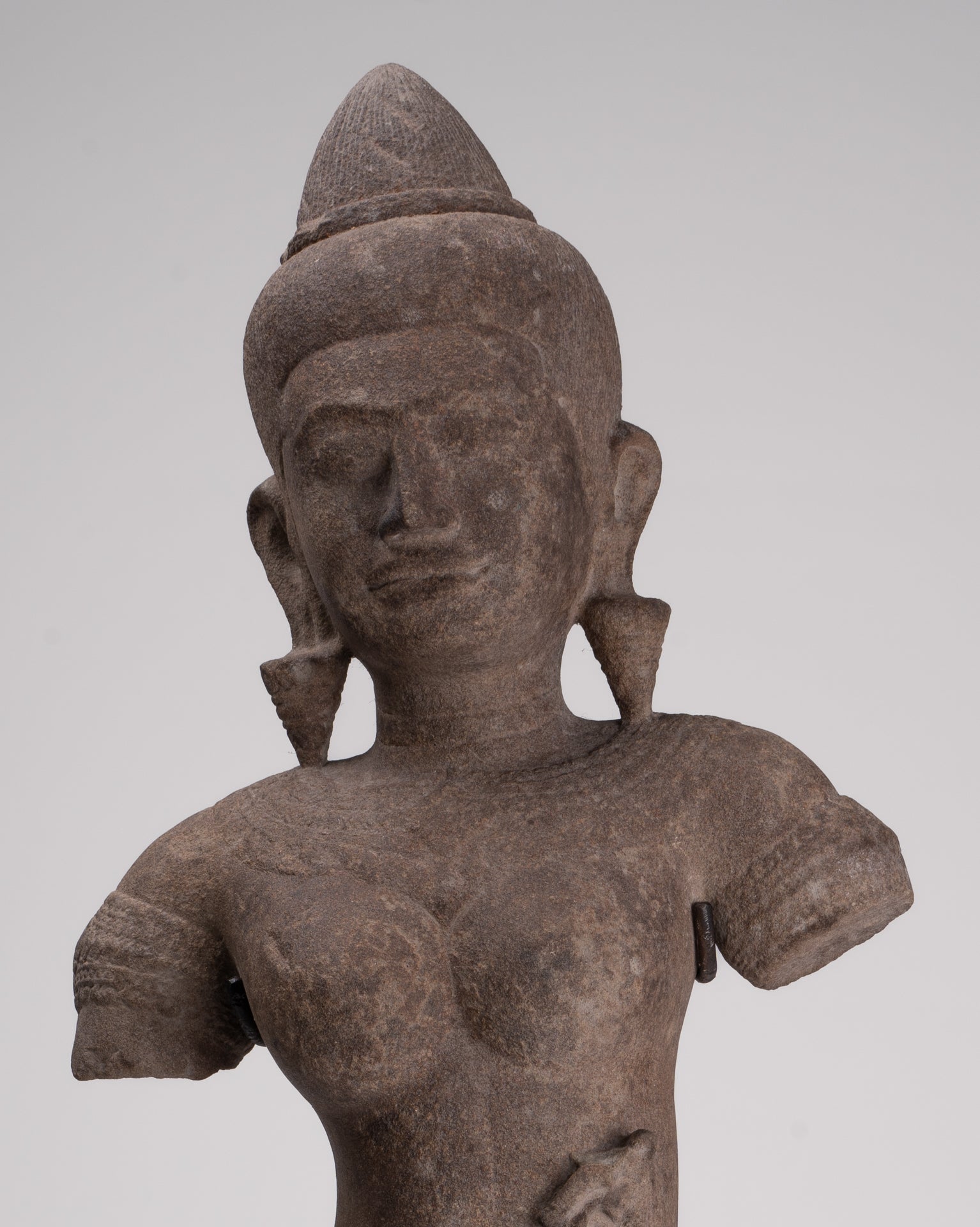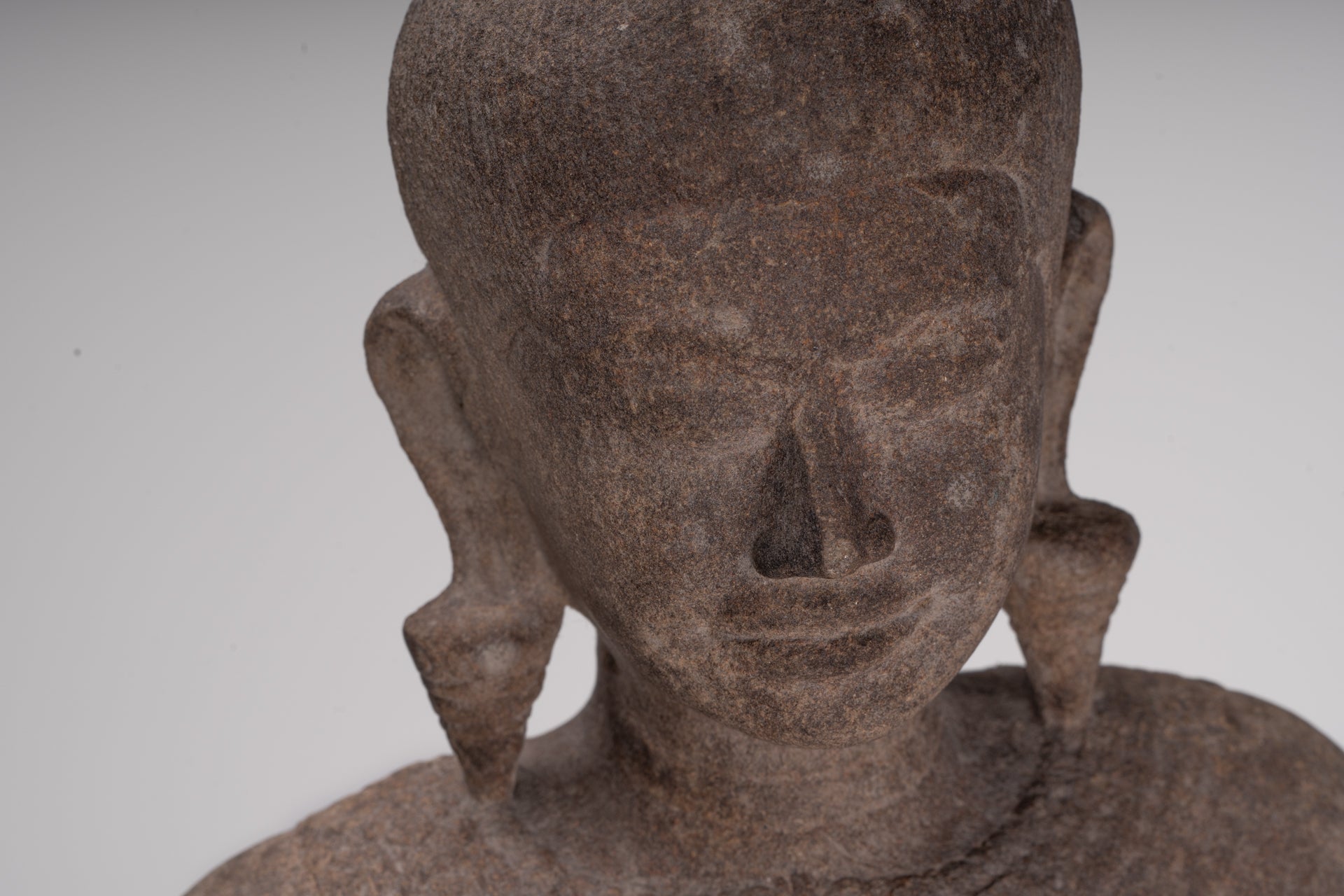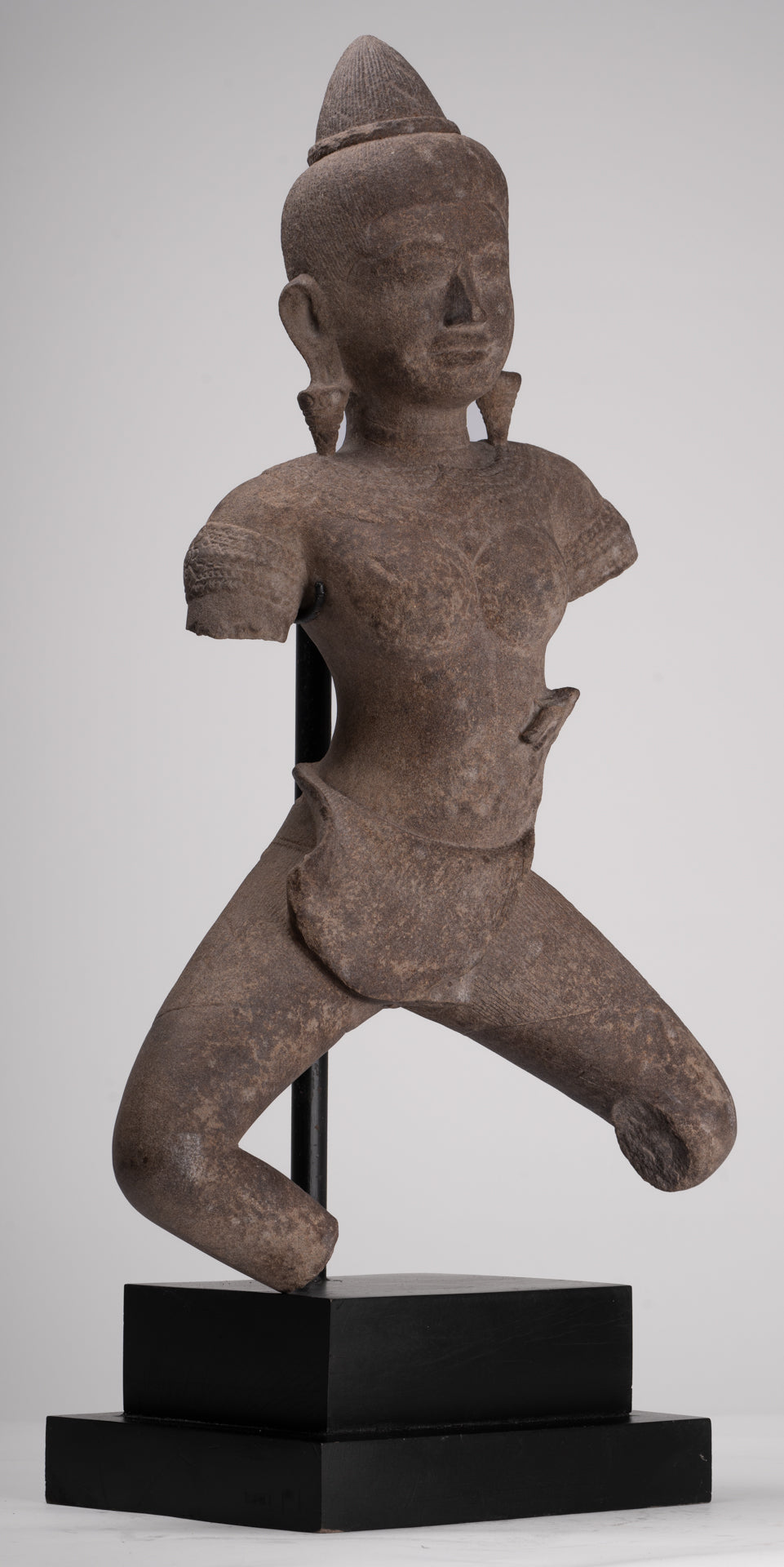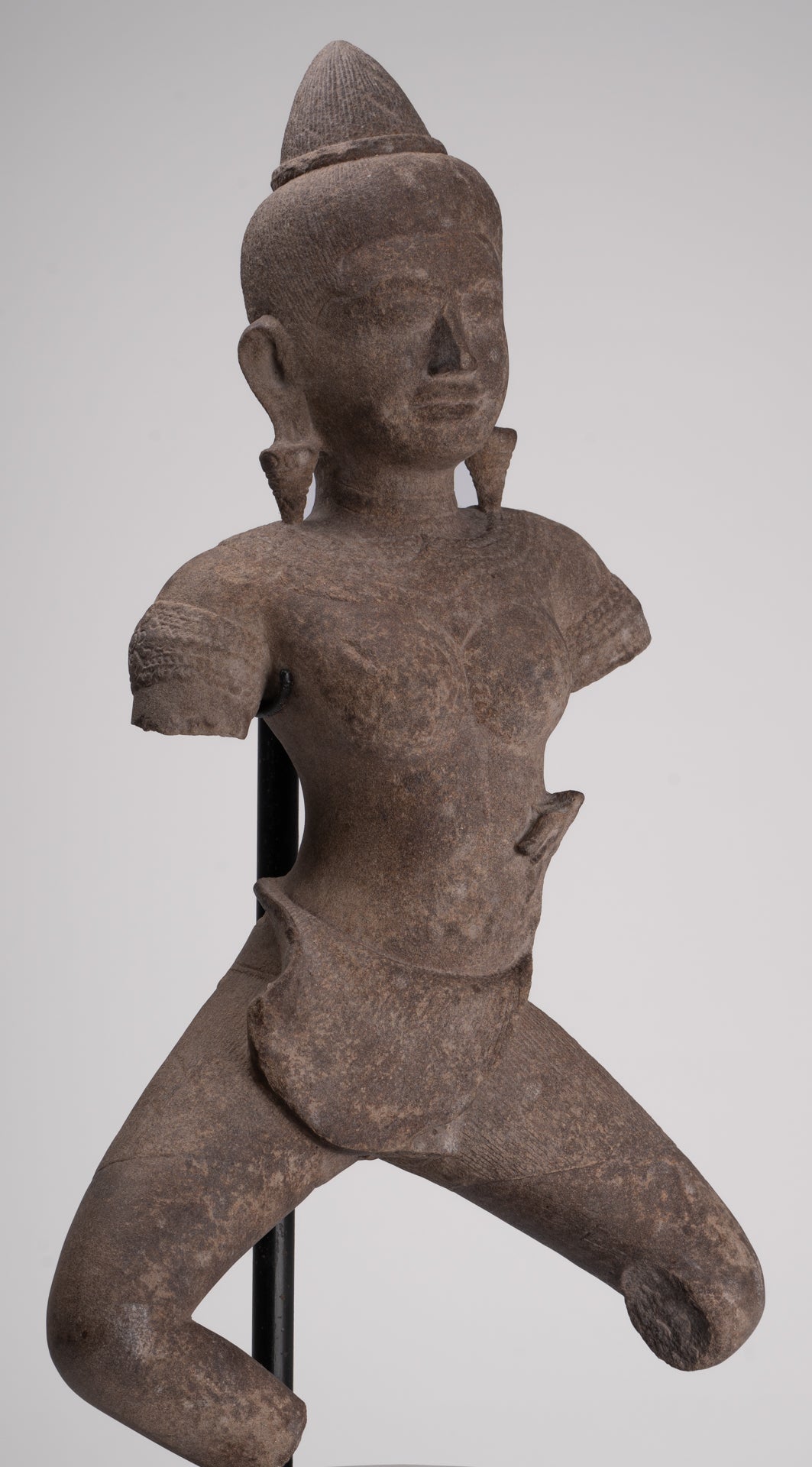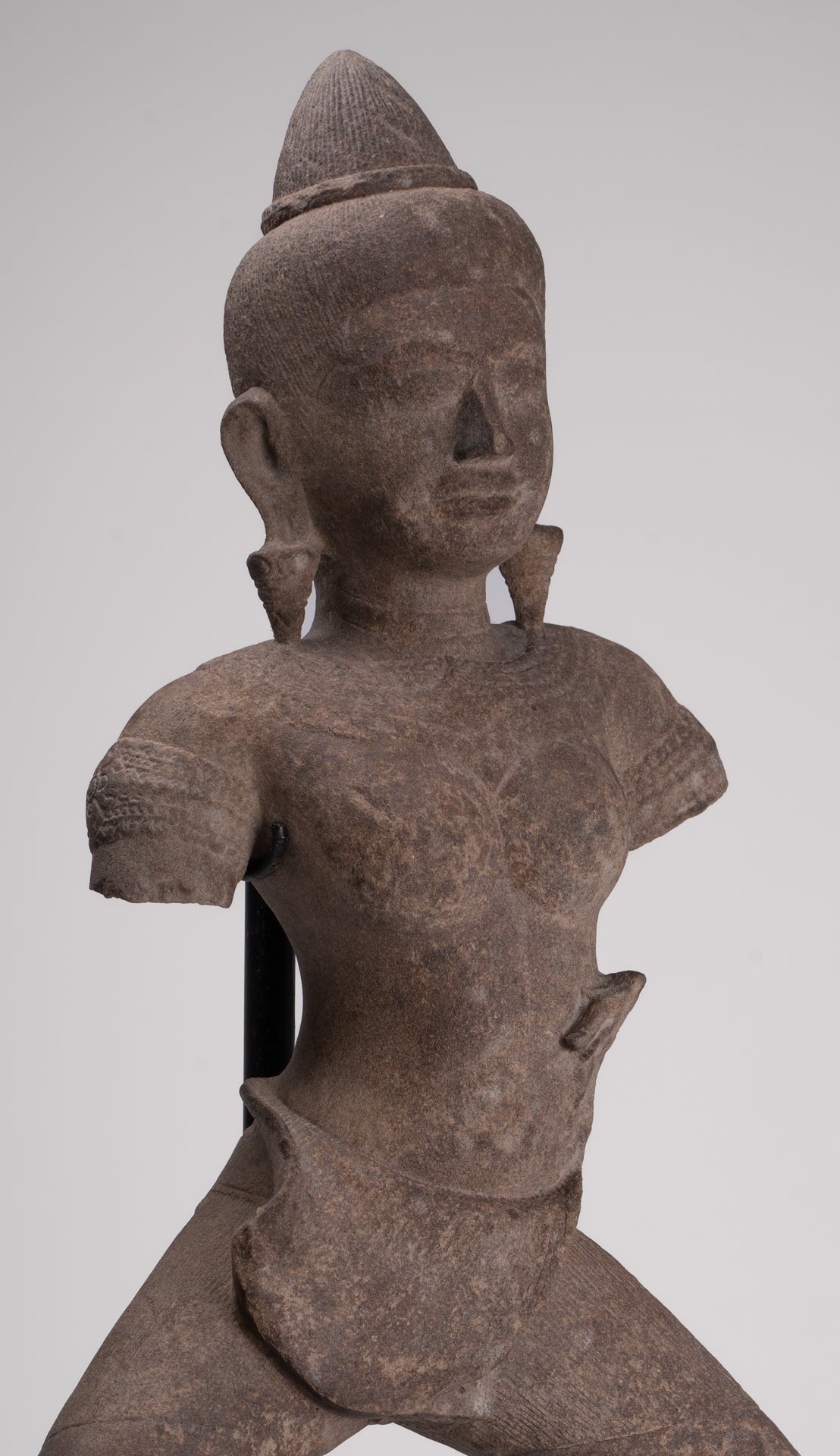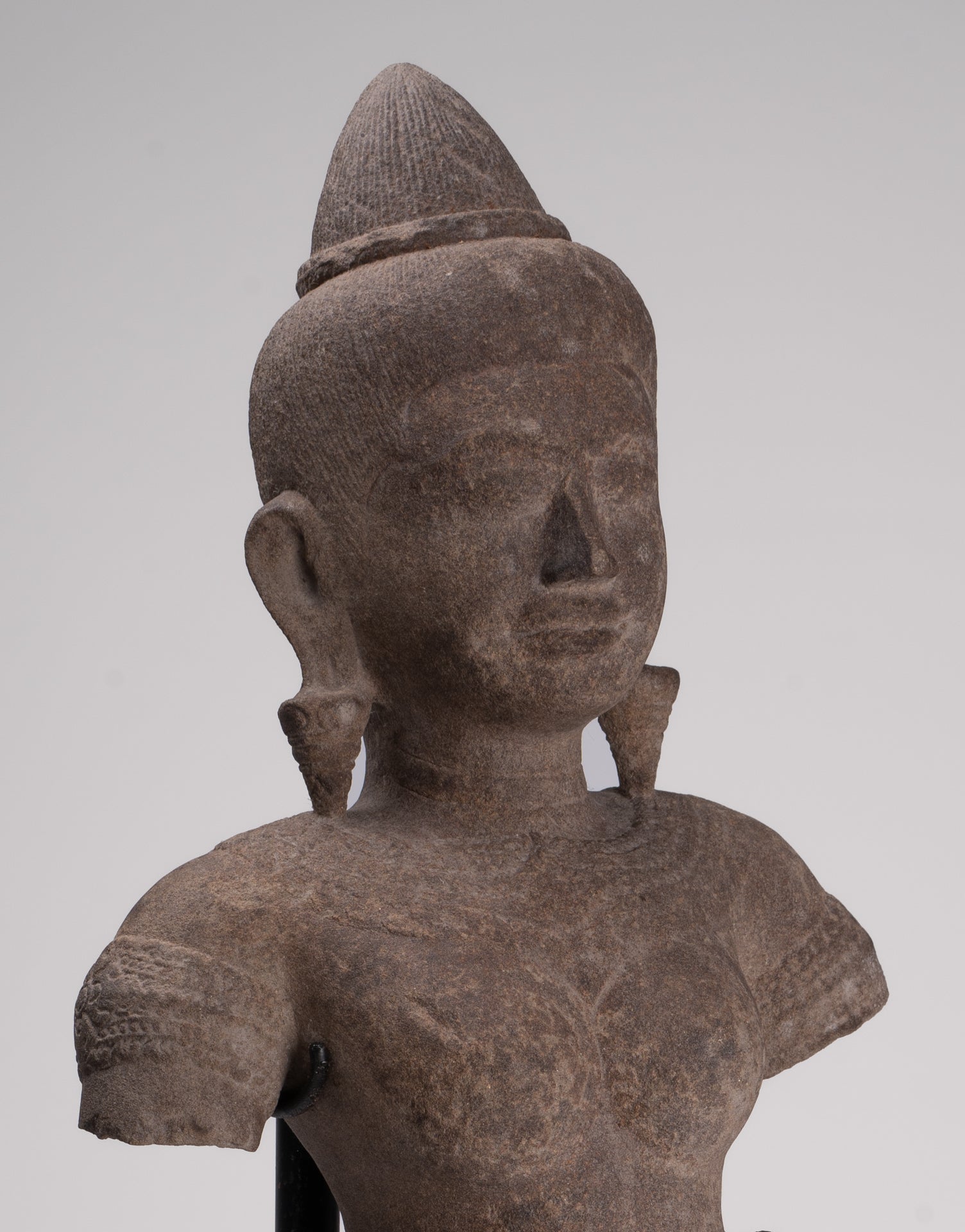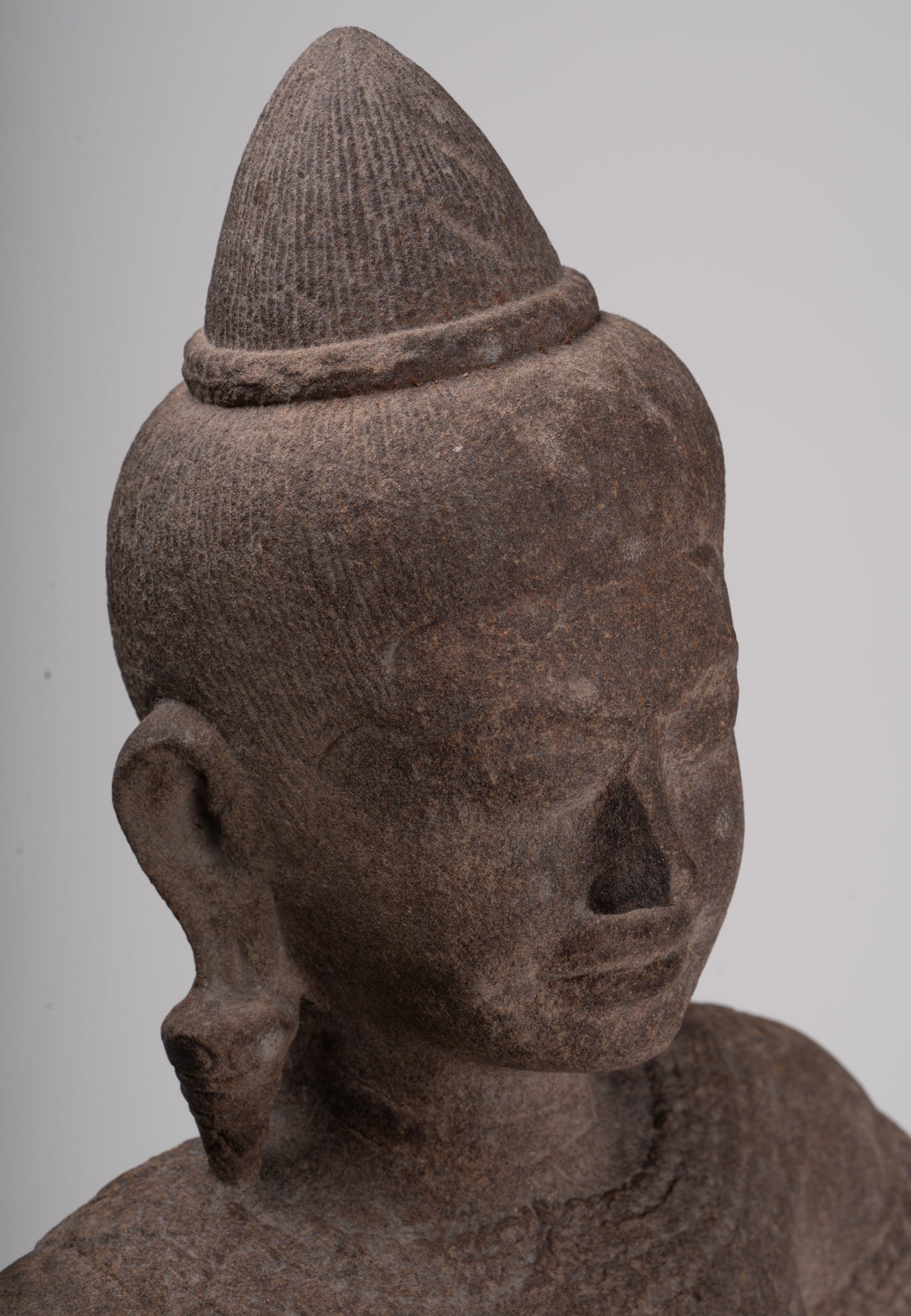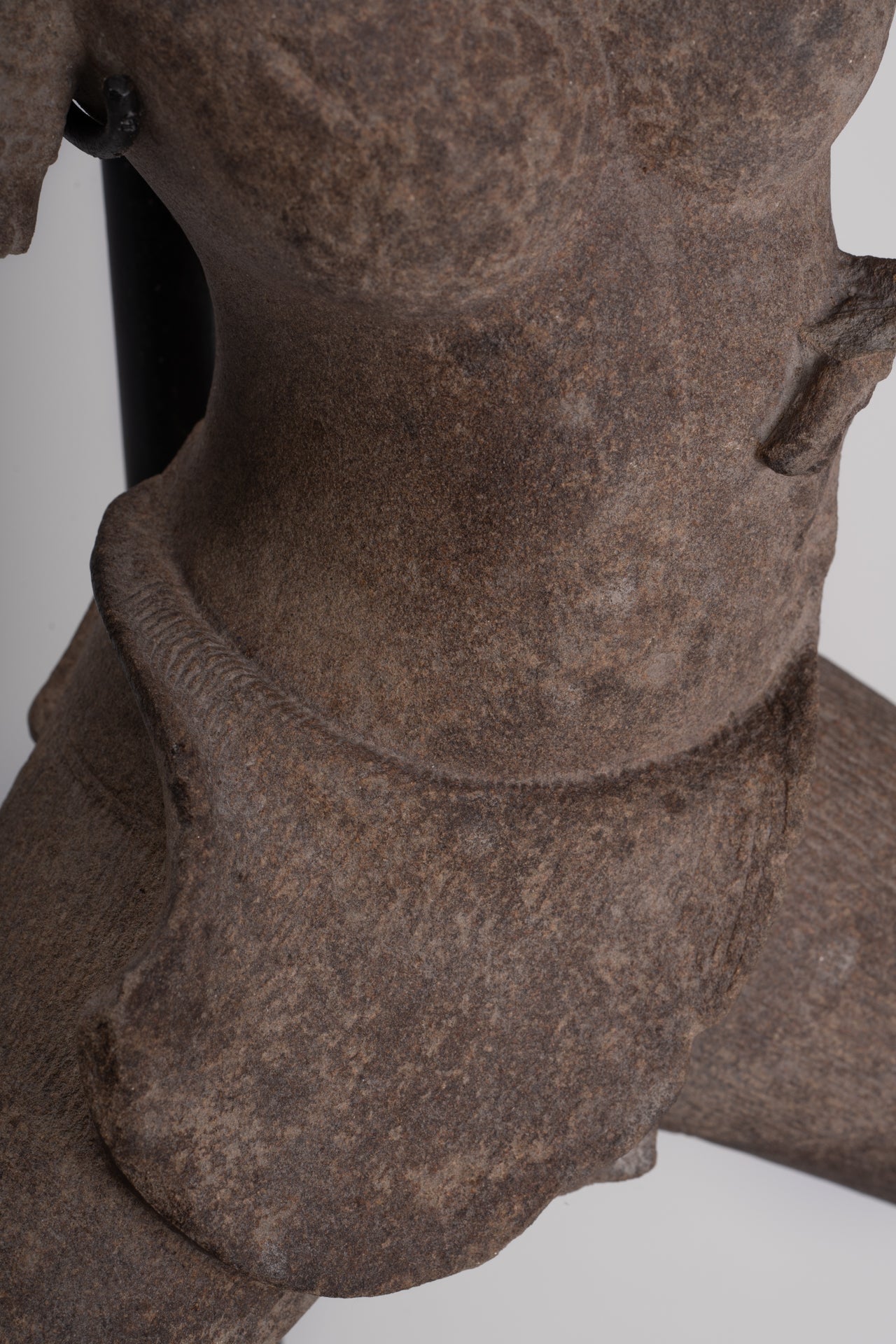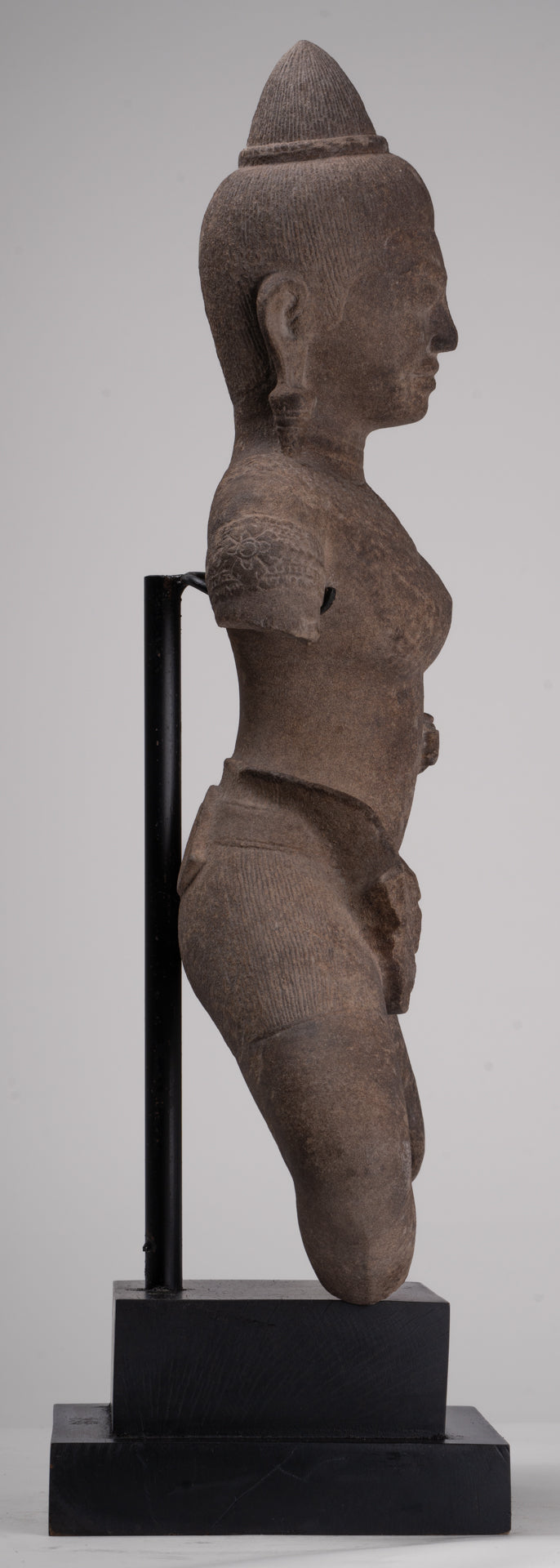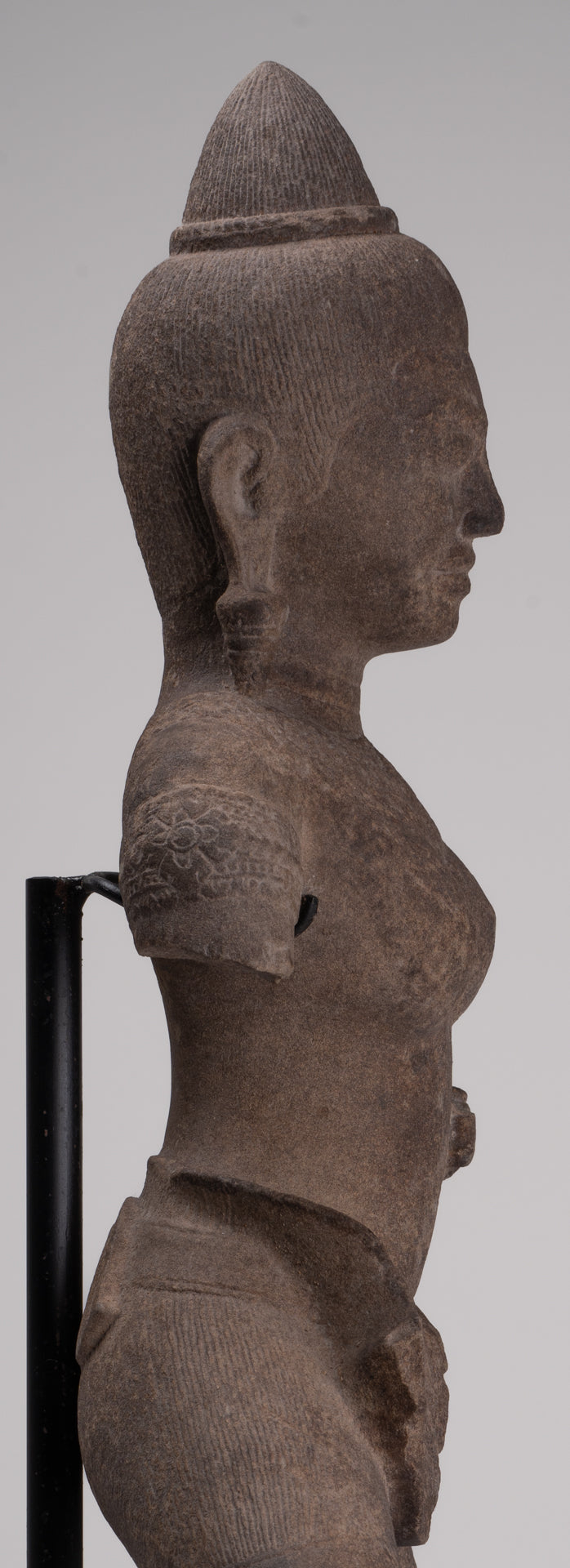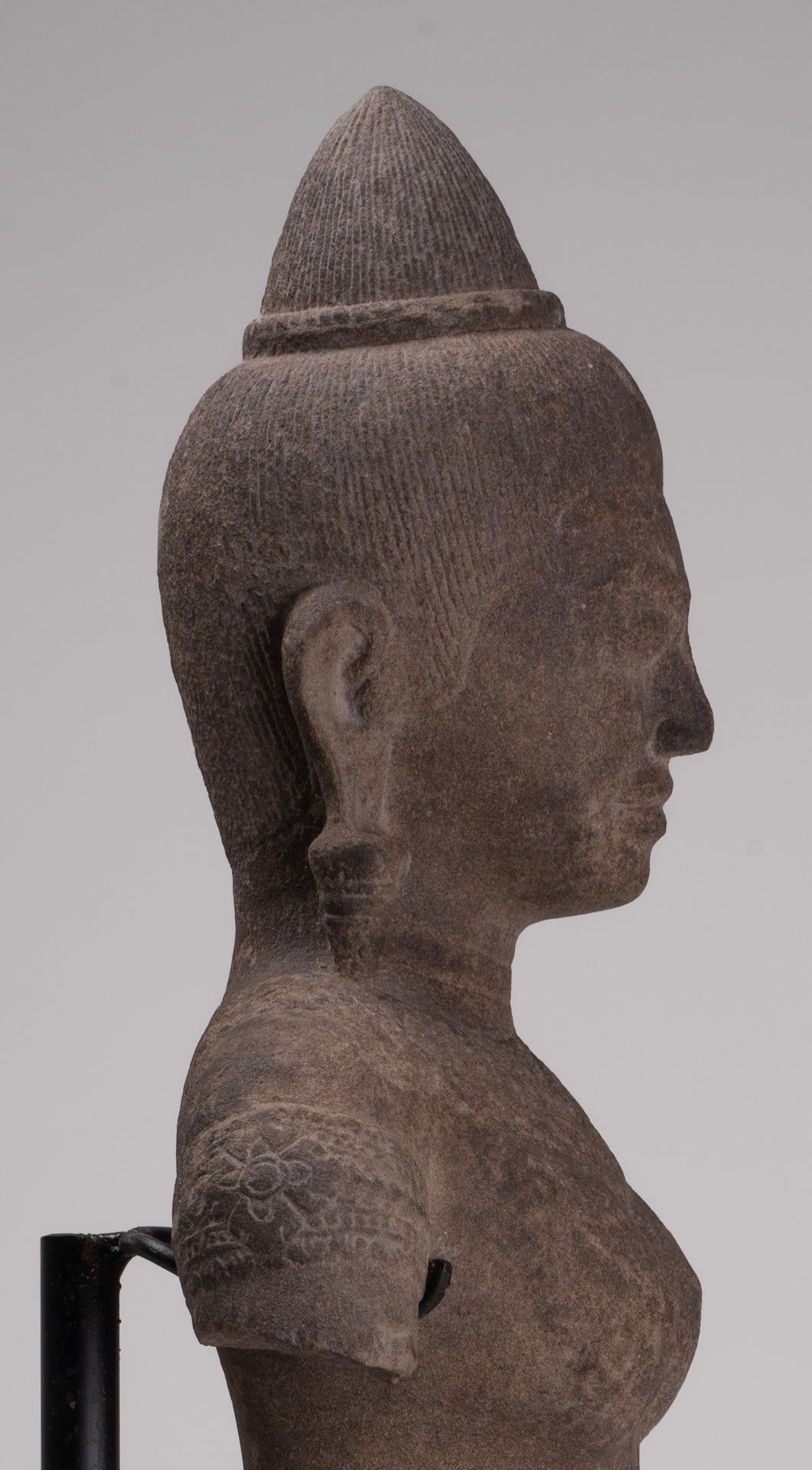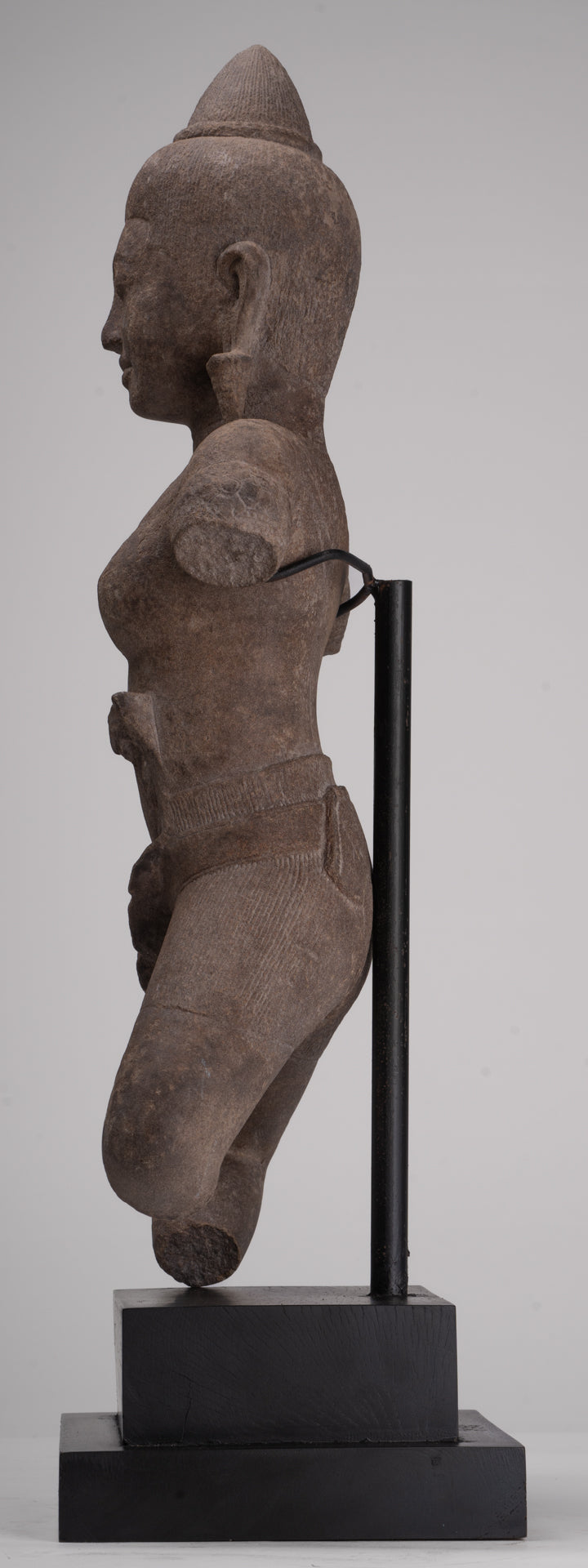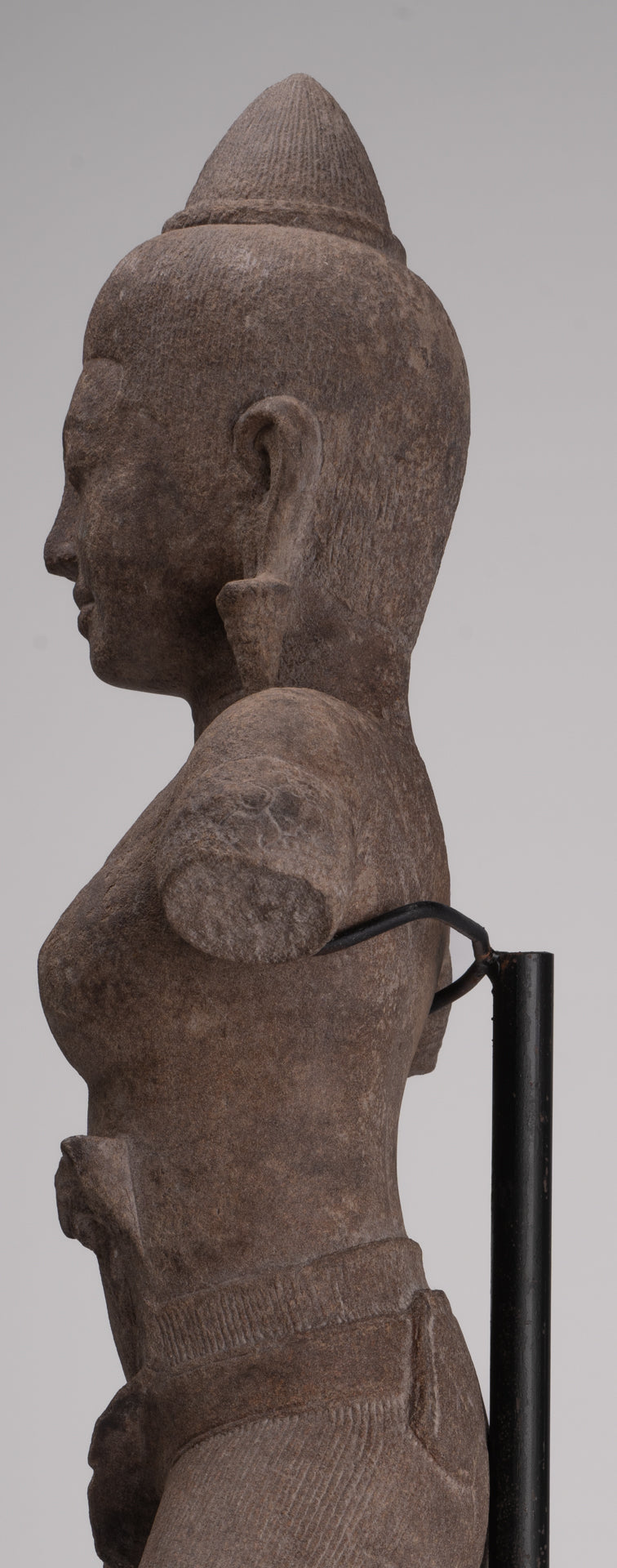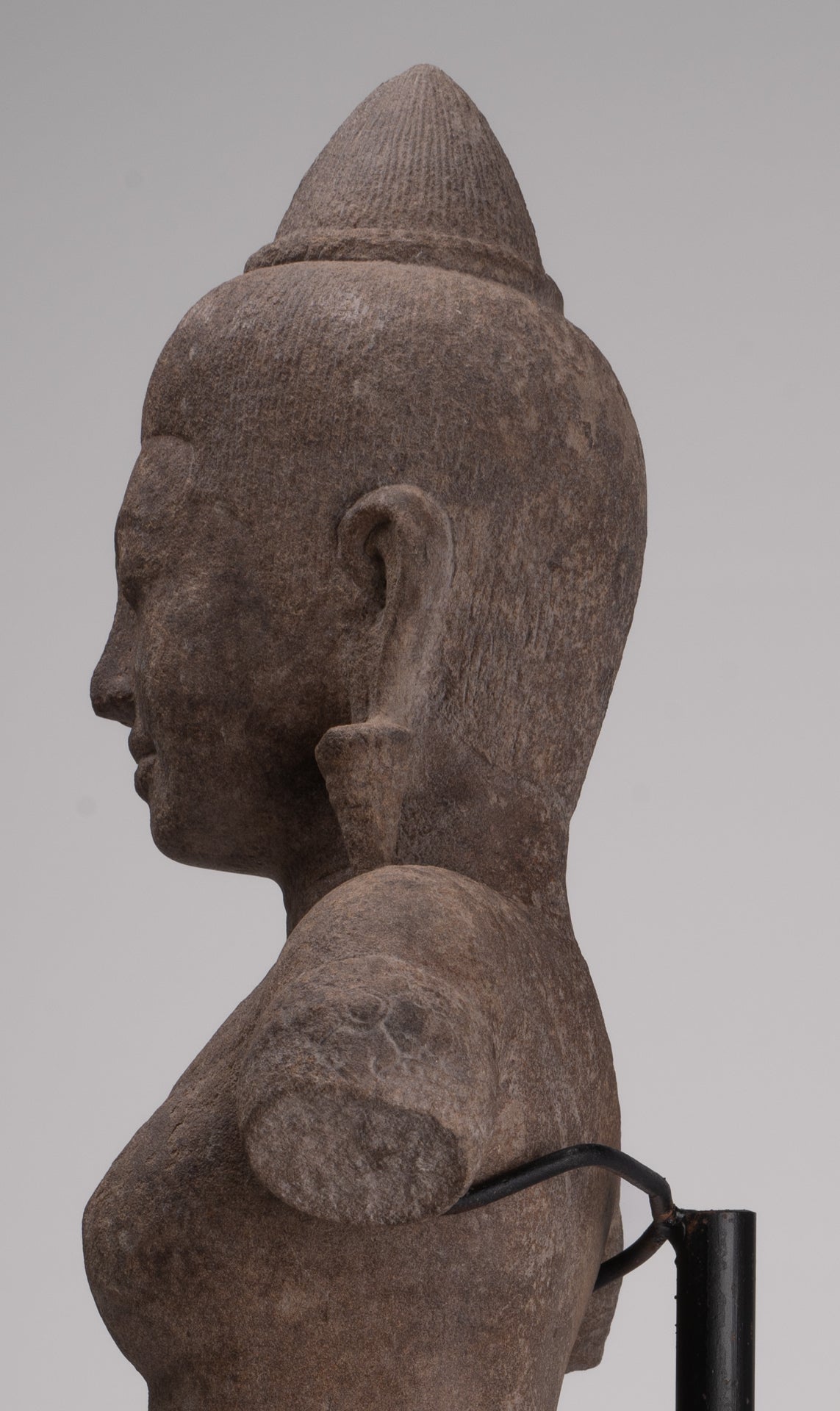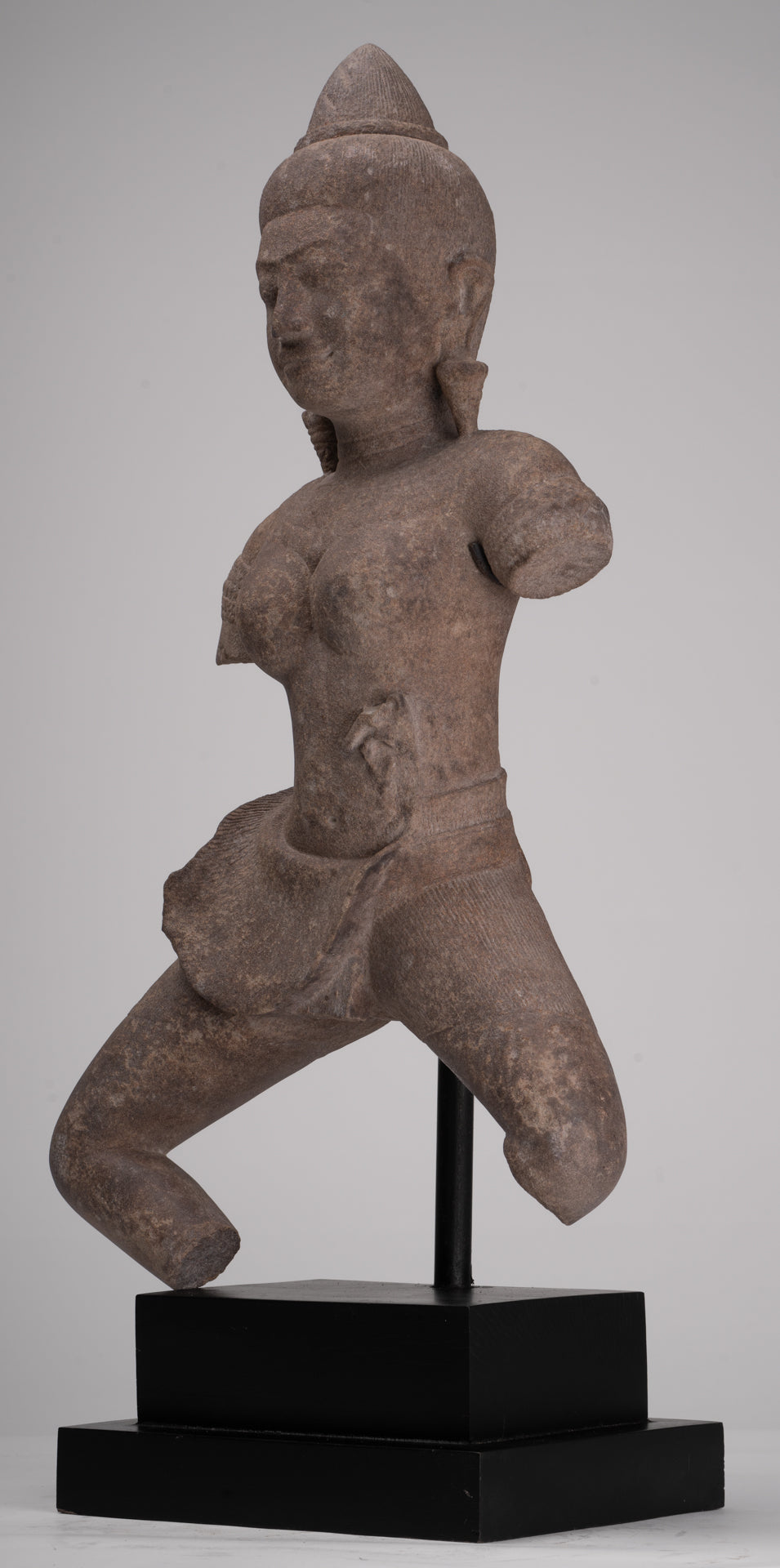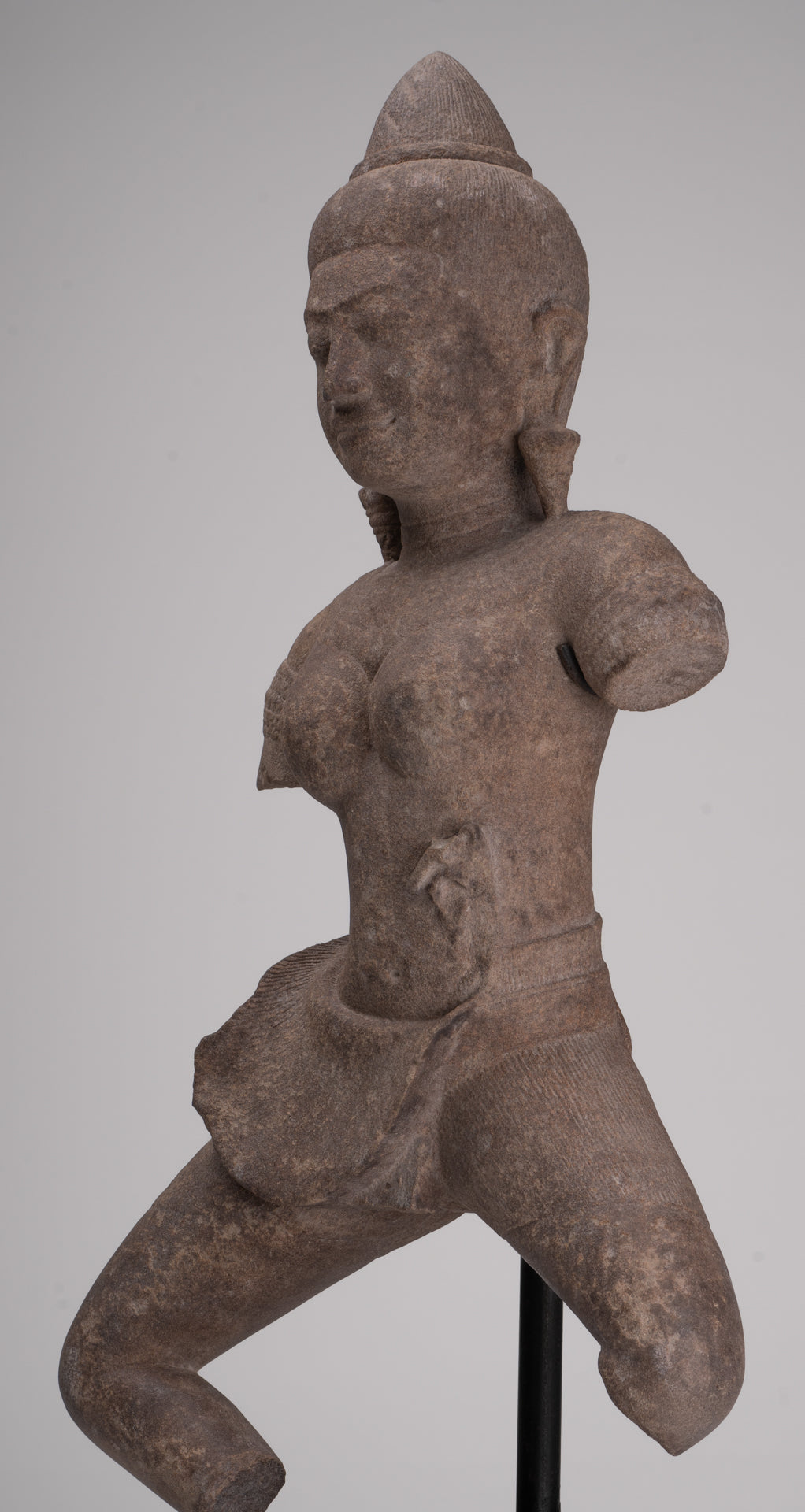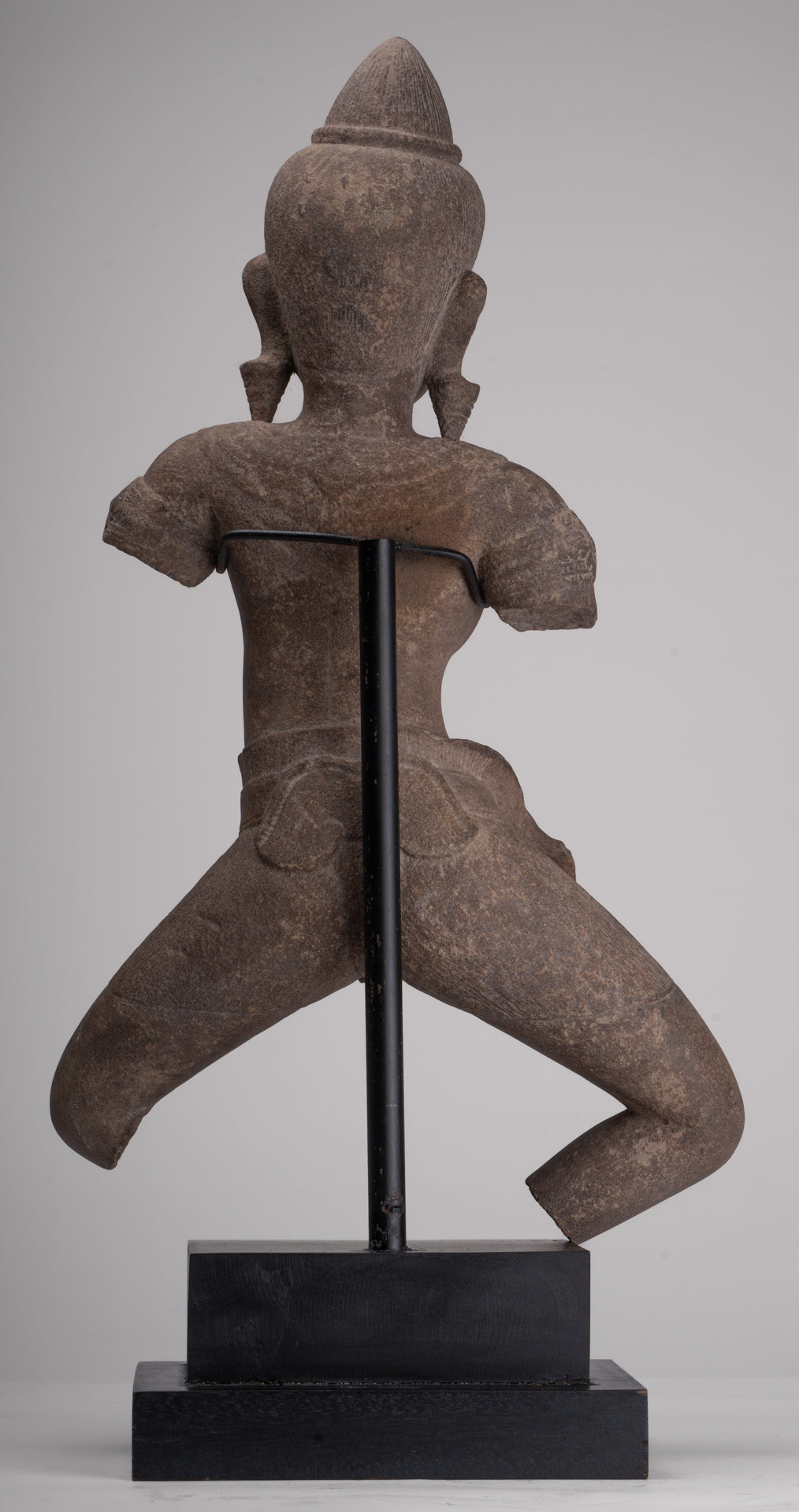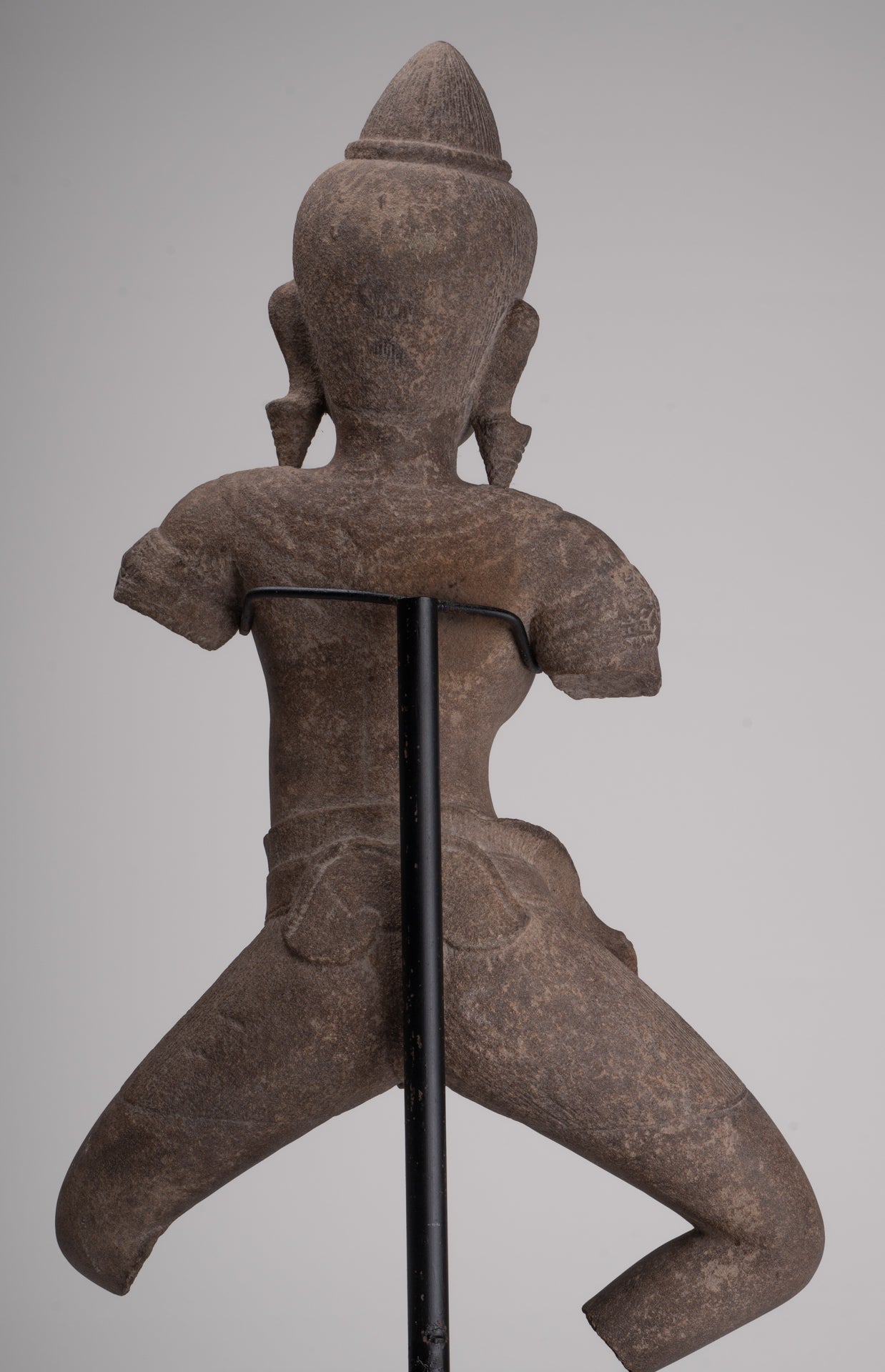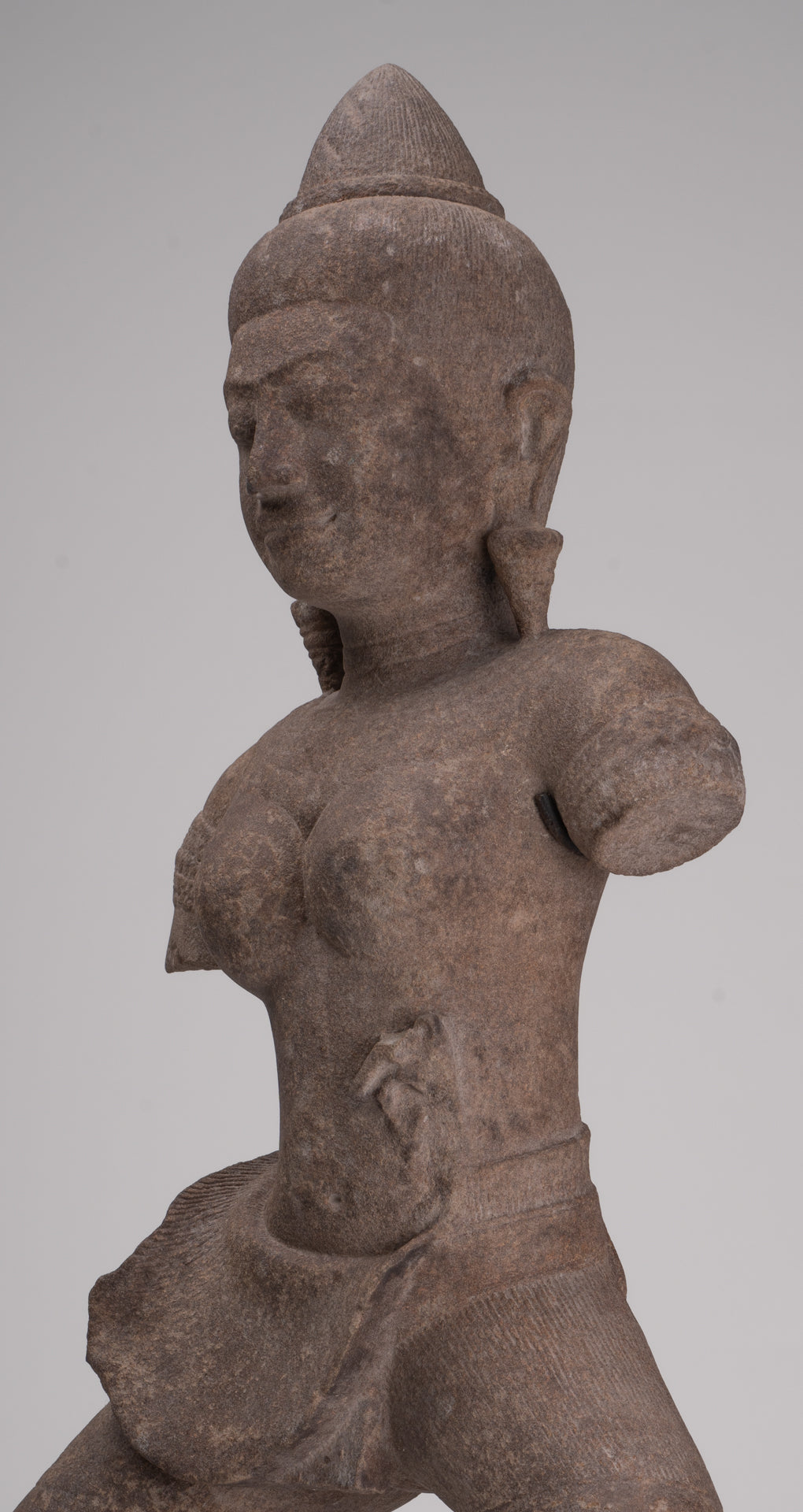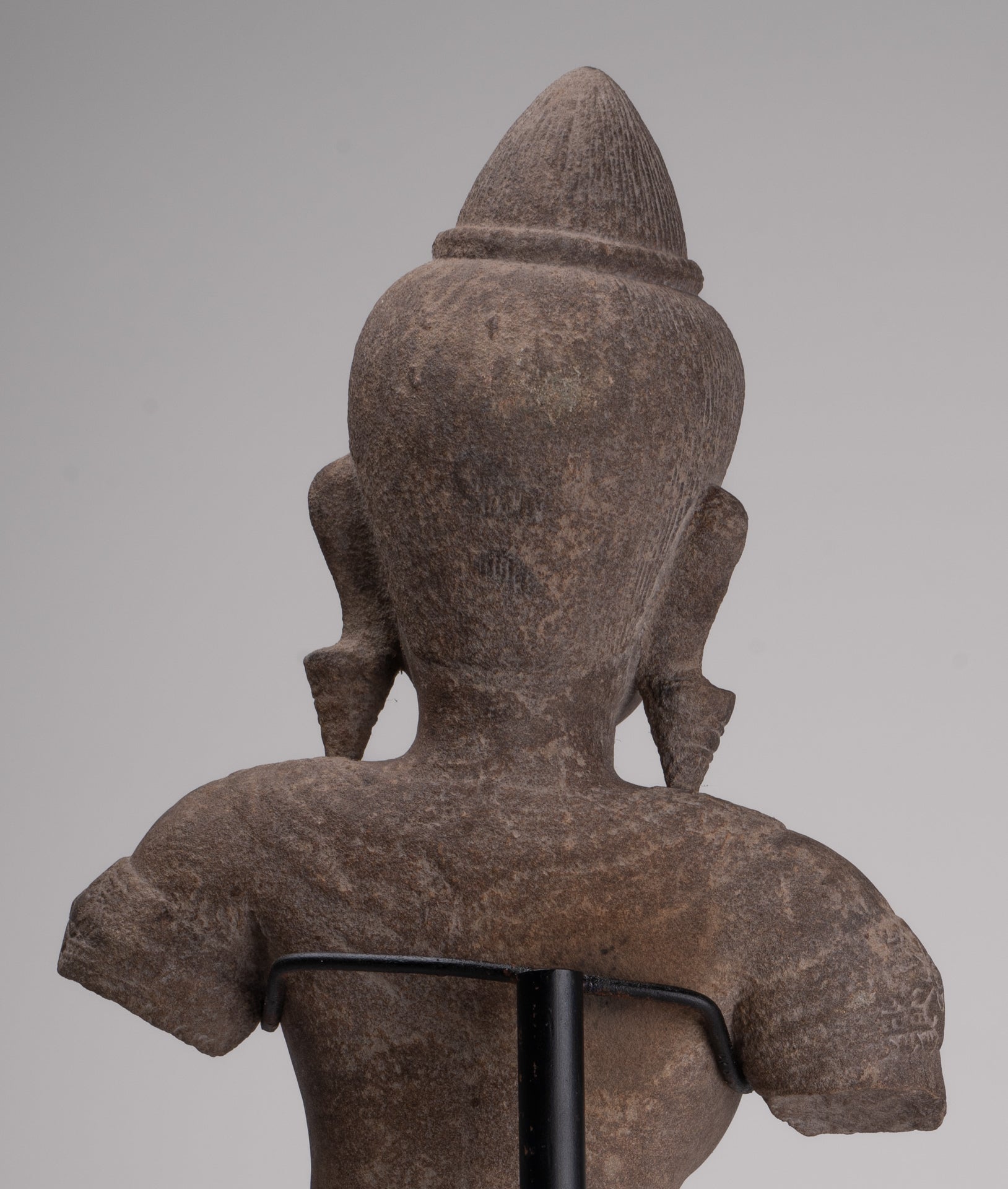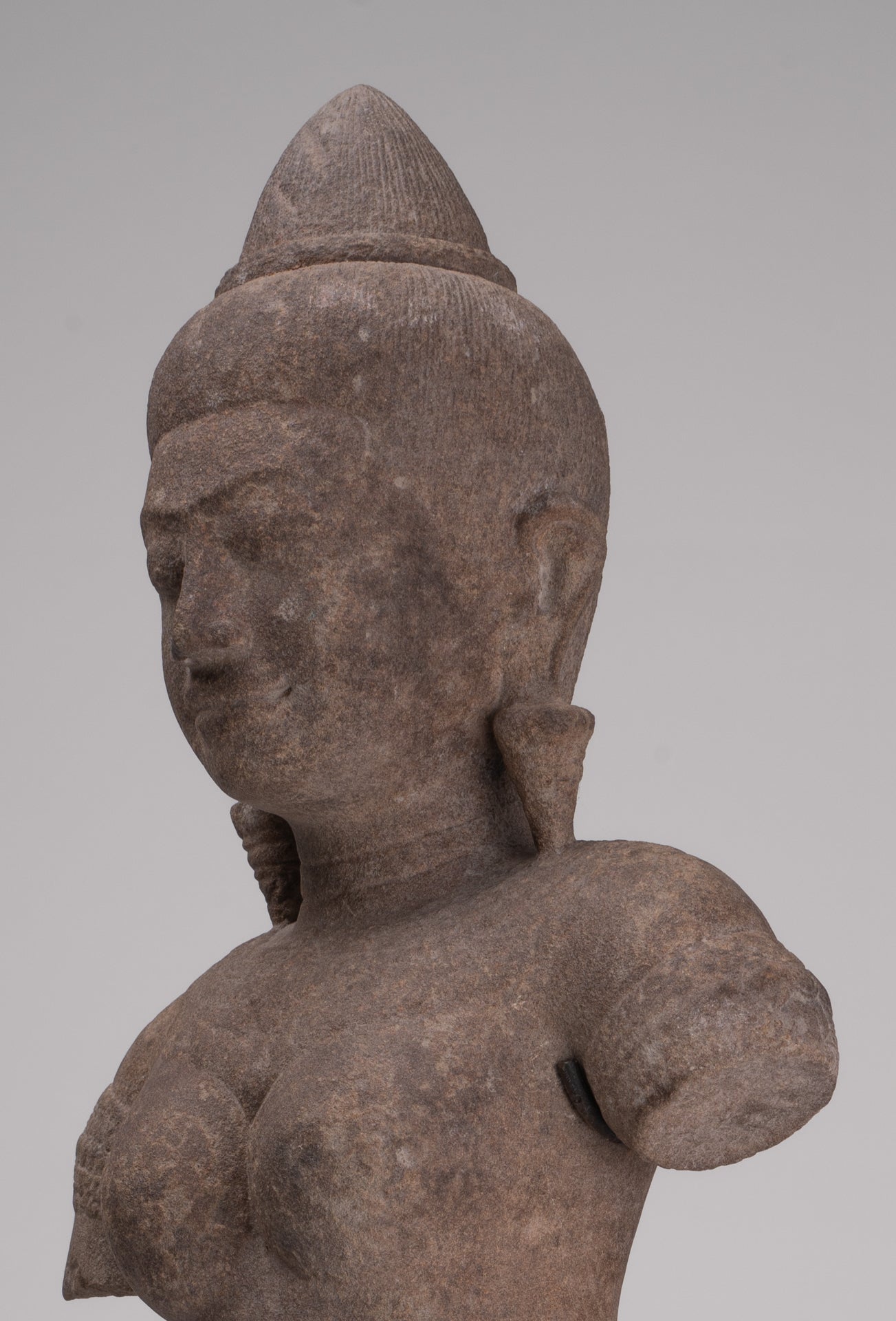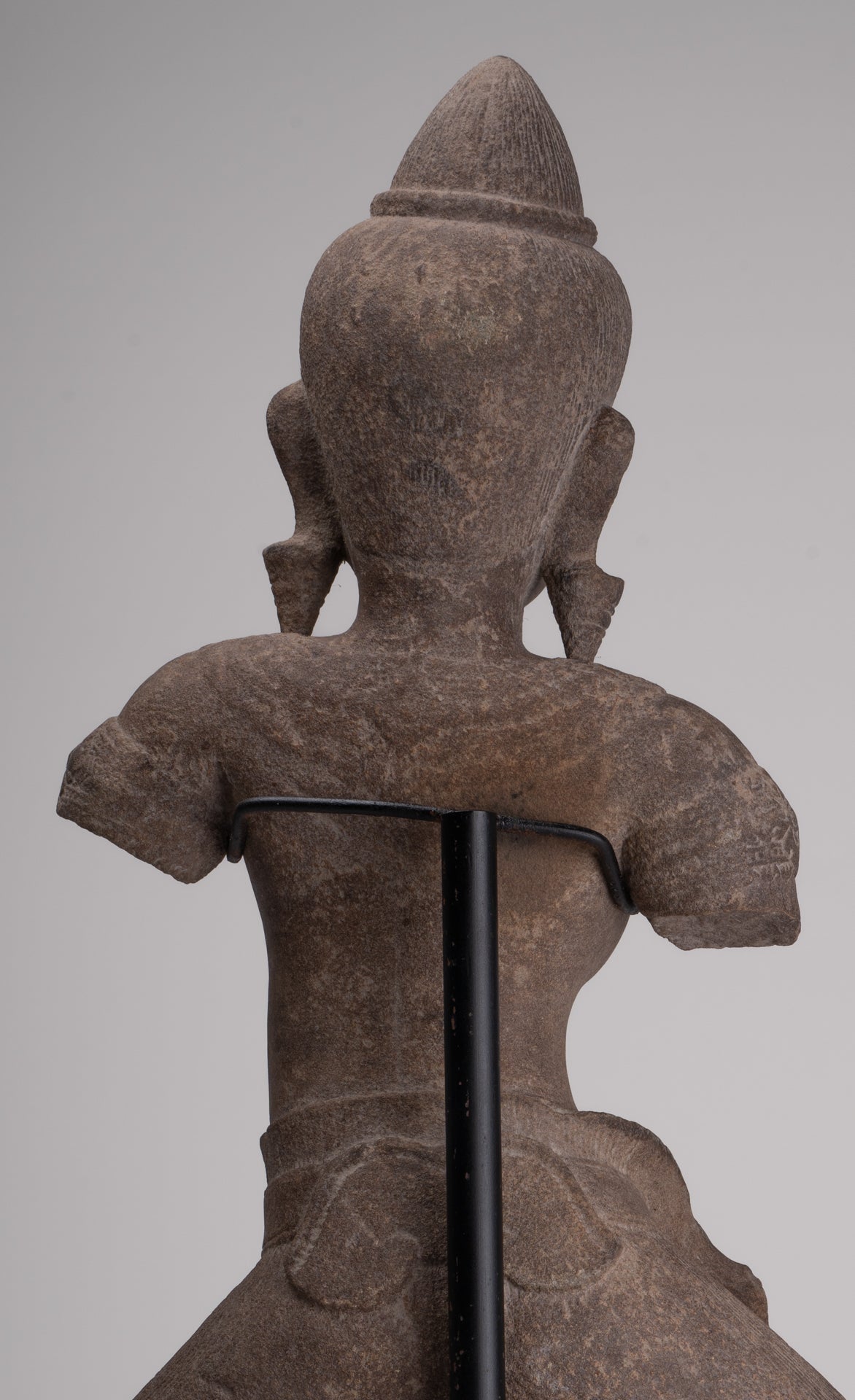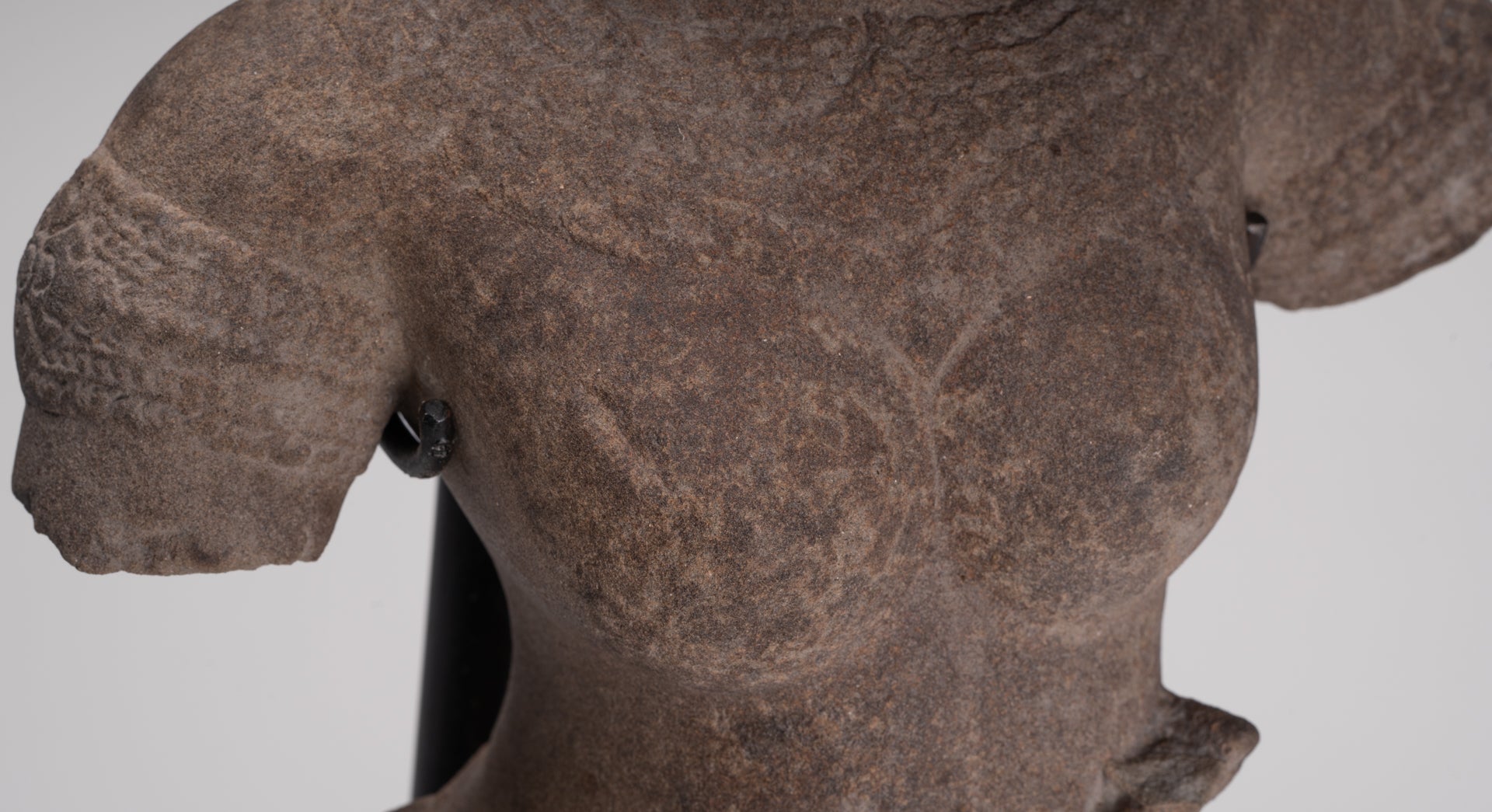-
Antique Khmer Style Stone Standing Apsara or Angel Statue - 64cm/26"
Measurements Height 64cm/26"
An antique Khmer style sandstone standing Apsara or Heavenly angel in late 12th century Bayon style.
The Apsara is a female spirit of the clouds and waters in Hindu and Buddhist mythology a celestial nymph or celestial maiden.
The Apsaras of Bayon Temple, nestled in the heart of Angkor Thom, stand as elegant reminders of the Khmer Empire's unique blend of Hindu and Buddhist spirituality. Bayon, built by King Jayavarman VII in the late 12th century, is famed for its towering stone faces and intricate carvings, making it one of the most iconic sites in Angkor.
Amidst its many reliefs, the Apsaras of Bayon are distinguished by their distinct beauty and serene presence, embodying grace, devotion, and the Khmer Empire's artistic mastery.
As celestial dancers, guardians, and symbols of feminine grace, Apsaras hold deep cultural and religious significance in Hindu and Buddhist traditions alike.
Apsaras are beautiful, supernatural female beings. They are youthful and elegant, and superb in the art of dancing. They are often the wives of the Gandharvas, the court musicians of Indra. They dance to the music made by the Gandharvas, usually in the palaces of the gods, entertain and sometimes seduce gods and men.
As caretakers of fallen heroes, they may be compared to the valkyries of Norse mythology. As etherial beings who inhabit the skies, and are often depicted taking flight, or at service of a god, they may be compared to Angels.
Apsaras are said to be able to change their shape at will, and rule over the fortunes of gaming and gambling. They are also associated with fertility rites.
With the spread of Hinduism and later Buddhism into Southeast Asia, the image of the Apsara was adopted into Cambodian culture, where it evolved into a unique artistic and cultural symbol. In Cambodian tradition, Apsaras are not only celestial dancers but also embody the ideals of feminine beauty, elegance, and grace, making them a prominent feature in Angkorian and post-Angkorian art.
The artistic style of the Bayon Apsaras reveals a marked evolution from the earlier, more elaborate depictions seen in Angkor Wat. While the Apsaras at Angkor Wat are adorned in intricate jewelry and complex headdresses, those at Bayon are generally simpler and more restrained, reflecting the shifting aesthetic preferences of the time.
Key Artistic Elements of Bayon Apsaras:
- Simplified Ornamentation: Unlike the lavishly decorated Apsaras of Angkor Wat, Bayon’s Apsaras are portrayed with simpler attire and less elaborate jewelry, focusing instead on natural grace and elegance.
- Expressive Facial Features: The faces of Bayon’s Apsaras are more expressive, exuding a gentle, serene aura. This difference underscores a stylistic shift towards a more introspective representation, possibly reflecting Jayavarman VII’s Buddhist emphasis on inner peace and compassion.
- Dynamic and Naturalistic Postures: Her the Bayon Apsara is depicted in a relaxed, flowing pose that conveys a sense of graceful movement. This naturalism marks a significant departure from the more formal, symmetrical poses seen in earlier Khmer art.
- Distinct Hairstyles and Headdresses: While simpler than their Angkor Wat counterparts, Bayon Apsaras still feature unique headdresses that vary across carvings, with floral patterns and cascading hairstyles. This diversity highlights the attention to individual expression, making each Apsara appear unique.
The artistic details of the Apsaras reflect not only the skill of Khmer sculptors but also the cultural significance placed on these celestial beings. Their ornate attire and graceful poses are symbols of divine beauty, embodying the ideals of femininity and spiritual harmony.
The Apsaras of Bayon Temple offer a window into the rich cultural and spiritual landscape of pre-modern Cambodia. As symbols of beauty, grace, and spiritual harmony, they represent not only the artistic achievements of the Khmer Empire but also the unique synthesis of Hindu and Buddhist ideologies under Jayavarman VII’s reign.
Their distinct style and serene expressions capture the introspective qualities of Mahayana Buddhism, marking a significant departure from the grandeur of Angkor Wat while preserving the timeless beauty of Khmer artistry.
Today, the legacy of the Bayon Apsaras continues to inspire Cambodia, bridging the past with the present and honoring the resilience and creativity of a people who have preserved their culture through centuries of change.
To aid with safe shipping your Apsara will be wood crated before shipping. There is no additional cost for this packing, crating and shipping service.
Enlighten your modern interior with this stunning antique style Khmer Apsara from HD Asian Art that with traditional design is sure to add an exotic touch to your modern interior. Styled after artistic techniques prevalent in the time of the powerful Khmer Empire of South East Asia.
This traditional in appearance piece is sure to add a unique touch to your home, office or sacred space. One of the most recognisable of the Asian deities this representation of the Apsara is sure to enlighten your home with endlessly timeless style.
-
The majority of orders will be shipped with DHL. This is a secure, express and fully tracked service.
Items less than 2Kg we typically ship using Royal Mail.
Once we receive your order we try to ship all orders the same or next working day.
Large and/or fragile pieces requiring palletising, specialist crating and/or extra packaging may take a little longer. Palletised shipments will be delivered curbside.
All orders over 35 GBP will be shipped free of charge.

-
We genuinely hope that all purchases delight.
However, if they do not, regardless of reason, we will refund all orders upon receipt of the unwanted item. Just notify us within 14 days of receiving your order that you wish to make a return and send the piece back to us with 30 days of delivery.
Let Us Help You Find The Piece You Desire
What Our Customers Think
Receive the idol....its stunning...thank you...
Sushmitha, St. Johnsbury, VT, USA
I want to tell you that the 2 statues are arrived, and looks much more better than in pictures. I love them. Thx a lot. Have a nice day.
Tommaso, Piacenza, Italy
Bien reçu tout est ok. Merci pour l’emballage. Cdt.
Jean-Baptiste, Paris, France


